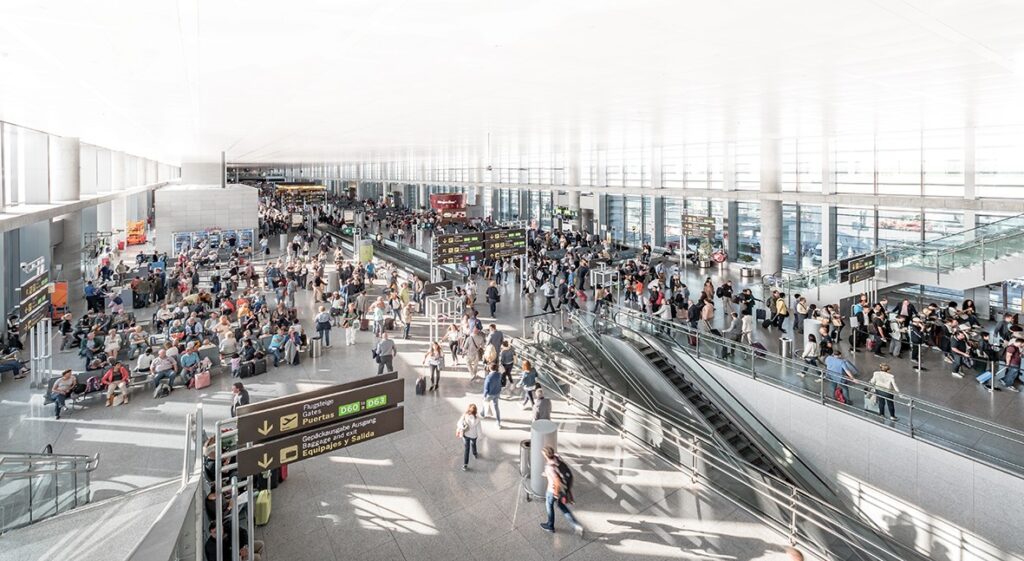Egypt’s Tourism Minister, Ahmed Issa, addressed the audience of the American Chamber of Commerce in Egypt in January’s luncheon under the theme of revisiting Egypt’s tourism strategy in a turbulent and ever-challenging economic environment. Issa began his speech by touching on the few positive markers, saying Egypt’s tourism is on the right path despite various key headwinds.
Issa committed to a highly ambitious target of an increase of 25-30% per annum in tour operators and tourist visits, which he qualified would be attained over a timeframe of the coming five years. By 2028, Egypt hopes to see the heralded goal of 30 million tourists.
Citing the tourism barometer report, Issa outlined that Egypt’s score of 108.6 points from a September 2022 survey by the Information and Decision Support Center of the Egyptian Cabinet, gave it a positive or optimistic sentiment on the industry, and the highest performing sector of the Egyptian economy for the previous year.
Compared to other industries, tourism was one of the few that saw an improvement, with an 11.4% increase in business confidence for 2023 compared to the previous year, outpacing all other industries domestically.
With a consensus amongst the public and private sectors on the hike increase in prices, 60% of players in the tourism industry expect their revenues to increase, while 25% maintain they will remain unharmed, and only 15% see a potential drop in their revenues, which Issa highlighted was an encouraging outlook for the year ahead.
Ambitious aims
“The goal is to regulate a fast-growing industry of 25-30% per annum, one led by a robust private sector, and governed by an effective regulatory framework,” he stated. Egypt has only been obtaining less than 1% of the total tourist catchment in the world.
Is it a question of supply or demand, awareness, better methods of promotion and marketing the Egyptian product? “It turns out it is not demand,” Issa was unequivocal in stating. He highlighted that 55% of the 1.4 billion annual tourists globally are interested in coming to Egypt for its five key behavioral segments; culture and leisure (11.8%); cultural explorers (16.3%); adventure samplers (15.8%); resort relaxers (6.1%); family vacationers (5.6%).
“It’s not a problem with demand, communication or promotion,” Issa said. He clarified that the ministry’s role is dual fold, primarily as a regulator and policy-maker, and secondarily, as a manager of public spending programs. “We license and regulate 1200 hotels, more than 2,259 tourism companies, 1,325 restaurants, 479 diving and marine sports recreation centers, 2,407 bazaars and shops, 11,826 tour guides, 133 archaeological sites (amongst them 6 UNESCO World Heritage Sites) and 31 museums.”

Rooms for improvement
“The [main reason] we are not getting [our target numbers] are aviation and hotel rooms,” he revealed. Citing the limited number of flights to Egypt, including on low-cost carriers (LCCs), Egypt comparatively lags behind regional counterparts Morocco (47%), Turkey (33%) and KSA (29%) for example in LCC volumes arriving in their countries. The latter two are especially pertinent as they receive over 30 million tourists per annum.
Hotel capacity is an issue because “we simply have not built enough hotel rooms,” outlining that annual growth in this category went from 0.5% to 1.9% from 2018 to 2022. With over 200,000 rooms available in the country, this is far fewer than the benchmark of half a million rooms, which Issa posited countries with high tourism rates such as Egypt should target.
Furthermore, limited local and foreign investments in all accommodations and the absence of master plans for tourist destinations, as well as an unbalanced distribution of hotels, geographically and by category, are significant concerns moving forward.
“Of Egypt’s 211,610 hotel rooms, only 15,804 of them are in floating hotels on boats in Luxor and Aswan, and less than 6,710 are in these highly popular local tourist destinations,” Issa said. “Uncompetitive value proposition for the high-paying independent travelers and limited use of technology are added areas that Issa thought worth mentioning but said they will be focused on more carefully by him and his ministry in the second half of 2023.

FIT for service
Issa maintained that Egypt requires a trifecta of factors to attract the goal of 30 million annual visitors including a threefold increase in aviation seat capacity; an increase in the quality of tourist experience and protection; and enhanced investment environment and a threefold increase in capacity and entertainment facilities (theme parks, dining, shopping, casinos etc.).
In efforts to address some of these flashpoints, Issa touched on Egypt’s digital transformation which today offers 78 nationalities the option to apply for and obtain a tourist visa through the dedicated eVisa portal, as well as the digitization of ticketing as positive developments to this effect.
Issa announced for the first time that Egypt will be launching a global search for a full-time consultant to act as an expat regulator, which will be a first for the ministry. The role of this international-style regulator will aid in capacity-building exercises to develop second-level leadership through training and cross-exposure. It would also facilitate the build-up of new desktop audit and regulatory environment, and field audit roles to ensure the accuracy and credibility of desktop reporting.
Issa foresees, after years of insufficient investment levels, “proven demand and existing trends in hotel occupancy show an investment opportunity of $30 billion over the coming 5-7 years in hotels and tourist experiences,” but this would only be possible with the addition of roughly 290,000 rooms of hotel capacity, he explained.
A key tourist demographic, building a strategy and product for frequent independent travelers (FITs), is a crucial component moving forward, according to Issa. FITs are tourists that visit Egypt without any local guide or as part of an organized touring group through an agency and such. Here, collaborations with various other ministries are in effect, totaling 14 work streams already adopted across various relevant ministries. “We will be working together over the coming two to three years to deliver the right value propositions for FITs,” he said.
Numbers in this key category of FITs “has been dwindling in the past decade,” according to Issa. “The time has come for us to truly work on building a product over the next two to three years for the independent traveler, and I am committed with the leadership team and the ministry to try to be able to work with my fellow ministers in government, to build and attract the right number of FITs.”







